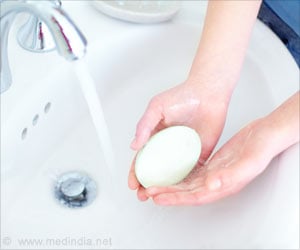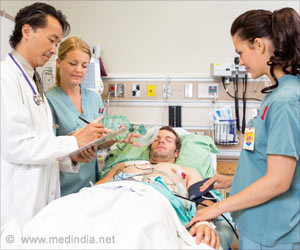World Hand Hygiene Day 2016 focuses on hand hygiene among health care workers to reduce the risk of hospital borne infections.

- Hand Hygiene Day 2016 is celebrated to prevent the spread of infections.
- This year, the focus is on hand hygiene in health care.
- The campaign is aimed at lowering risk of infections prior to surgery, during surgery and post surgery.
The incidence of nosocomial infections in a medical intensive care unit in a district hospital in India ( August 2012-May 2013) was found to be 17.7%. Out of which
- 34.8 % urinary tract infections
- 21.7% pneumonia
- 17.4% surgical site infection
- 13% meningitis and infections in the blood
- 13% gastroenteritis
Burden of Nosocomial Infections
Nosocomial infections are defined as those infections, which infect patients during stay at the hospital or soon after, and they were not present or incubating at the time of admission. These infections lead to- Longer period of recovery for the patient
- Adds to already existing medical complication in the patient
- Longer periods of stay at the hospital due to the infection
- Increased economic burden for the patient
- Patient’s family undergoes further emotional strain due to the additional disease
People at Increased Risk for Nosocomial Infections:
- Premature babies
- Elderly patients
- Patients in the intensive care unit
- Patients with poor immunity due to an underlying infection
Focus of World Hand Hygiene Day 2016
“Hand hygiene as part of an infection prevention and control programmein all settings that support surgery, prevents patient infection and reduces an avoidable burden on health systems”-WHOProfessor Didier Pittet, Director, Infection Control programme and WHO collaborating Center on Patient Safety and the lead adviser of WHO’s ‘Clean Care is Safe Care’ says that between 5 and 8 million lives can be saved through safe hands. Hand hygiene to support safe surgical care will ensure that patients are effectively protected while in surgical care, operating room and even during outpatient services.
Dr Peter M Nthumba, Surgeon, A/C Kijabe Hospital, Kenya relates how hand washing with soap and water or with alcohol based hand sanitizers could prevent the spread of a large number of diseases in Kenya and the rest of the world.
5 Moments of Hand Hygiene in Health Care
WHO describes 5 moments in surgical care before which hand hygiene practices should be followed to minimize the risk of infection spread.Moment 1: Before Patient Contact:
- Helping patients wear their spectacles
- Checking the patient’s blood pressure or ECG
- Applying a mask for providing oxygen
Adequate hygiene should be practiced to prevent entry of germs into the patient while preparing the patient for the surgery. This could include situations like:
- Drawing blood for tests before the surgery
- Inserting needles for IV medications
- Changing wound dressing
- Inserting catheters
- Changing bed pans
- Holding a cup while the patient spits out sputum
- Cleaning up after the patient throws up
Washing hands to ensure hand hygiene is important especially after any form of contact with the patient. This will prevent transfer of infectious agents from the patient to the environment and infection to the healthcare worker.
Moment 5: After Touching Patient Surroundings
The patient is not the only source of infection, but bedding, linen, tables, TV remotes and other items that are touched or used by the patient and then handled by a health care worker also necessitates hand washing.
Professor Pittet further adds that nearly 31% of patients get surgical site infections in hospitals. 1 in 3 incidences is due to Staphylococcus aureus, with a large percentage of those Methicillin Resistant Staphylococcus Aureus (MRSA). Infections due to such ‘super bugs’ increase hospital stay and economic burden of the patient. When staff cleaned hands with soap and water or using an alcohol based sanitizer, there is considerably a lowered risk of infection.
Professor E Patchen Dellinger, Professor of Surgery, University of Washington Medical School, says that health care workers could use alcohol based scrubs before handling a patient and after. This lowers risk for irritation of the surgeon’s hands, hands without irritation harbor fewer germs, according to the professor.
After Surgical Care - Wound Cleaning
Professor Pittet says health care workers should ‘see’ their hands as life saving equipment, and also see their hands as potential vehicle of harm if not cleaned at the right times. Germs are not visible to the naked eye and hand hygiene practiced during the 5 moments of patient care will make sure the patient is protected. A patient journey happens everyday and every touch is important.Professor Joseph S. Solomkin, Professor at The University of Cincinnati College of Medicine stresses the risk of infections that could occur even outside hospitals, during surgery and post operative care.
Tips to Maintaining Hand Hygiene Among Health Care Workers
- Make hand washing a regular practice that it feels like second nature to do it immediately before and after touching a patient.
- Ensure availability of hand wash in every room and corridor of a hospital.
- Head of departments should monitor hand hygiene practices of others in the department.
- Simple procedures like holding a patient’s hand or checking for the pulse of the patient are risky procedures. Patient to patient transmission occurs through such simple gestures and so hand sanitization should be practiced diligently.
- The same gloves should not be used for multiple patients, change gloves between patients.
- WHO’s six step hand washing technique should be followed for effective hand hygiene.
- http://www.who.int/gpsc/5may/en/
- Infections in hospital - reduce the risk
https://www.betterhealth.vic.gov.au/health/conditionsandtreatments/infections-in-hospital-reduce-the-risk - Nosocomial Infections in Patients Admitted in Intensive Care Unit of a Tertiary Health Center, India
http://www.ncbi.nlm.nih.gov/pmc/articles/PMC4199166/ - The 5 moments for hand hygiene
http://www.handhygiene.org.nz/index.php?option=com_content&view=article&id=9&Itemid=109










